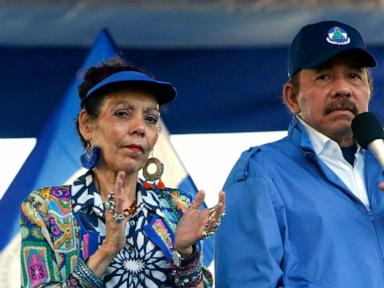ARTICLE AD BOX
Set against recurring billion-dollar ETF inflows, Asia’s mid-caps are starting to look like the next structural bid for bitcoin’s free float.
Japan’s Metaplanet has surpassed 30,00 BTC on its balance sheet, and Korea’s Bitplanet initiated a supervised, rules-based accumulation program.
What began as isolated treasury experiments, such as Nexon’s 2021 purchase and Meitu’s short-lived holdings, has shifted into programmatic accumulation.
Metaplanet transformed from a hotel operator into a Bitcoin treasury company, publishing monthly purchase notices and raising capital explicitly to buy more BTC.
Bitplanet rebranded from SGA Solutions and launched Korea’s first regulated corporate bitcoin buy program, targeting 10,000 BTC through daily purchases.
In parallel, smaller public companies are attempting to elevate their place into the mid-cap space. Thailand’s DV8 completed its first step in a crypto-treasury pivot with a 99.9 % warrant execution, raising CA$7.4 million.
Meanwhile, companies such as AsiaStrategy and HK Asia Holdings have repositioned themselves as listed vehicles for corporate Bitcoin exposure in Hong Kong.
AsiaStrategy, formerly a luxury retailer known as Top Win International, now allocates a portion of its treasury to Bitcoin and accepts BTC for product sales. It currently holds approximately 30 BTC on its balance sheet and aims to reach $1 billion in Bitcoin.
HK Asia Holdings has similarly transitioned toward a Bitcoin-denominated treasury model, disclosing purchases totaling about 28.9 BTC earlier this year as part of a broader digital-asset strategy aligned with Sora Ventures’ “MicroStrategy for Asia” framework.
The question isn’t whether corporates will add Bitcoin, but whether Asia’s mid-caps can absorb enough new supply to tighten float alongside ETF demand meaningfully.
If this cohort maintains this year’s pace, their net purchases can match or exceed meaningful chunks of miner issuance, layering another structural bid on top of spot ETF flows.
The Asia cohort: who’s buying
Japan dominates the Asian cohort. Metaplanet transitioned from hotels to a Bitcoin treasury in December 2024 and continued to accelerate through 2025, with frequent announcements of purchases. By Feb. 20, the company held around 2,100 BTC. By Sept. 30, that figure reached 30,823 BTC, placing Metaplanet fourth globally among corporate holders, according to Bitcoin Treasuries data.
The company’s “Phase II: Bitcoin Platform” deck outlines a multi-year capital-raising strategy geared to continued accumulation.
Metaplanet’s US income subsidiary and monthly purchase notices demonstrate programmatic execution rather than opportunistic buys.
Nexon, the Tokyo-listed gaming giant, acquired 1,717 BTC on Apr. 28, 2021, at an average cost of $58,226 per BTC. Coverage at the time established the purchase as treasury diversification.
Nexon has maintained this position since, providing a steady baseline in Japan’s corporate sector.
Korea entered the picture in late 2025. Bitplanet, formerly SGA Solutions, announced the first regulated corporate Bitcoin buy of approximately 93 BTC on Oct. 26-27, under Korea’s supervised infrastructure.
The company publicly targets 10,000 BTC through a rules-based daily purchase program. While awaiting a DART filing for Tier A confidence, company-aligned press and wire coverage establish the program’s existence and scale.
Hong Kong’s Meitu serves as the counterexample. The beauty-app company bought BTC and ETH in 2021 but fully disposed of both by Dec. 4, 2024, according to company announcements.
Meitu’s exit stresses the difference between early experiments and sustained treasury programs.
Liquidity math: supply absorption
Metaplanet’s 2025 net additions alone total 28,723 BTC, which is the difference between 30,823 BTC in September and 2,100 BTC in February. At the post-halving issuance rate of about 450 BTC per day, that single company absorbed approximately 64 days of new supply.
Through Oct. 30, Metaplanet’s adds represent roughly 20% of year-to-date issuance, which sits around 136,000 BTC for the period. That’s before counting Bitplanet’s ramp toward 10,000 BTC or any other Asia mid-caps that may announce programs.
Exchange-traded funds (ETFs) demand provides the comparative context. CoinShares’ weekly ETP flow reports show $3.55 billion in inflows for the week ending Oct. 4, and $921 million for the week ending Oct. 27.
At Bitcoin prices during those periods, weekly inflows converted to tens of thousands of BTC. The week ending Oct. 4 alone could represent roughly 29,600 BTC, depending on execution prices.
Metaplanet’s 28,700 BTC year-to-date sits in the same order of magnitude as a single strong ETF week, but with one critical difference: corporate treasury programs are persistent and rules-based, not sentiment-driven.
The float-tightening effect compounds when layered with corporate buys on top of ETF demand. Issuance of 450 BTC per day equals 13,500 BTC per month.
If Metaplanet’s pace of roughly 3,500 BTC per month on average over the February-September window holds, and Bitplanet scales toward its 10,000 BTC target over 12-18 months, the Asia cohort could absorb 20-30% of the monthly issuance before accounting for any US mid-caps that follow post-policy clarity.
That doesn’t remove coins from circulation permanently, but it does shift them from miners’ operational wallets to corporate treasuries with multi-year hold horizons.
 The share of circulating supply held by Asian corporates grew from near zero in early 2023 to roughly 0.2% by late 2025, trailing ETFs and miner inventories.
The share of circulating supply held by Asian corporates grew from near zero in early 2023 to roughly 0.2% by late 2025, trailing ETFs and miner inventories.Risks: accounting, custody, and governance
Accounting and audit verification vary widely. Metaplanet publishes frequent notices but doesn’t fully disclose cost basis or custody arrangements in public filings.
Nexon’s 2021 purchase came with a disclosed average cost, but subsequent updates are sparse.
Bitplanet’s program operates under Korea’s supervised framework, but complete DART filings haven’t yet surfaced publicly.
Investors relying on these disclosures face information asymmetry regarding wallet attestation, custody counterparties, and the exact execution of purchases.
Governance concentration is real. Metaplanet’s pivot to a bitcoin treasury represents a founder-led strategic bet, not a consensus of the board.
If leadership changes or shareholder pressure intensifies, the program could be reversed.
Meitu’s 2024 disposal demonstrates that corporate holders can exit as quickly as they entered, particularly when crypto becomes a governance liability rather than an asset.
Custody risk differs by jurisdiction. Japan’s regulatory framework for digital asset custody is maturing, but it remains less established than that of US qualified custodians.
Korea’s supervised infrastructure for Bitplanet adds oversight but also introduces regulatory dependency. If Korea’s crypto policy shifts, Bitplanet’s program could face interruption.
Policy shocks remain the wildcard. A US regulatory crackdown on corporate Bitcoin holdings, although unlikely, could have a ripple effect across Asia-listed companies with US investor bases.
Changes in tax treatment in Japan or Korea could alter the economics of treasury accumulation. Accounting standard shifts that force mark-to-market treatment rather than impairment-only could deter CFOs from adding volatile assets to balance sheets.
Going into 2026, tracking Metaplanet’s capital-raising execution against its “Phase II” targets will be something analysts will likely keep an eye on.
The company’s model depends on continuous access to equity or debt markets to fund purchases.
If capital becomes expensive or markets close, the pace of accumulation slows. Monthly “additional purchase” notices provide a real-time read on program momentum.
Bitplanet’s DART filings will confirm whether the 10,000 BTC target is board-approved and funded, or aspirational.
Watching for disclosure of actual daily buy volumes and any changes to the rules-based program structure will also be a key topic to observe. Korea’s supervised framework means regulatory updates could accelerate or constrain the program.
Comparing the cohort’s monthly net adds to ETF inflows and the 450 BTC per day issuance band comes next.
If Asia mid-caps collectively add 5,000-10,000 BTC per month in 2026, that’s 11-22% of new supply, which would have a material tightening effect when stacked against ETF demand.
If the pace slows or other corporates exit, as seen with Meitu, the thesis weakens.
US mid-caps post-policy clarity represent the next frontier.
If the SEC provides clearer accounting treatment or custody guidance, a cohort of $500 million to $5 billion market-cap US companies could follow Metaplanet’s playbook.
That would shift the narrative from “Asia’s mid-caps” to “global corporate treasuries 2.0,” with implications for float tightness that dwarf current levels.
The strategic question is whether corporate treasury programs become a permanent structural bid or a cycle-specific phenomenon.
Metaplanet and Bitplanet are testing whether mid-caps can execute MicroStrategy’s model at a smaller scale with board discipline and transparent disclosure.
If they succeed, the next halving in 2028 will face not just ETF demand and reduced issuance, but a global cohort of corporate treasuries that will programmatically absorb new supply.
If they stumble in process, such as governance reversals, custody failures, or policy shocks, the thesis that corporates can meaningfully tighten float dissolves, and bitcoin’s price discovery reverts to ETF flows and retail speculation.
What’s at stake is whether corporate balance sheets become a third pillar of bitcoin demand structure, or remain a niche strategy confined to a handful of conviction-driven management teams.
The post Can Asia’s mid-caps absorb 30% of new BTC supply? appeared first on CryptoSlate.
.png)
 7 hours ago
2
7 hours ago
2








 English (US)
English (US)